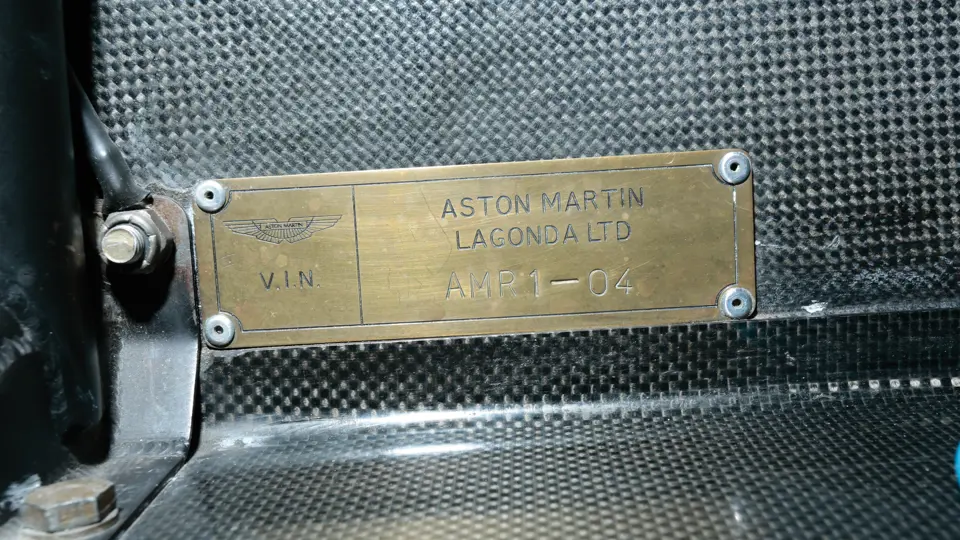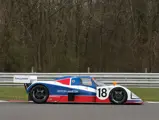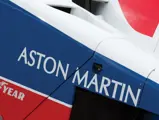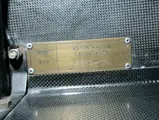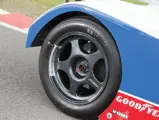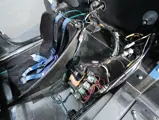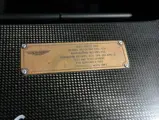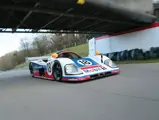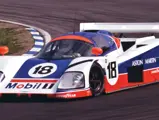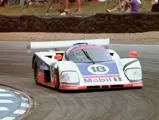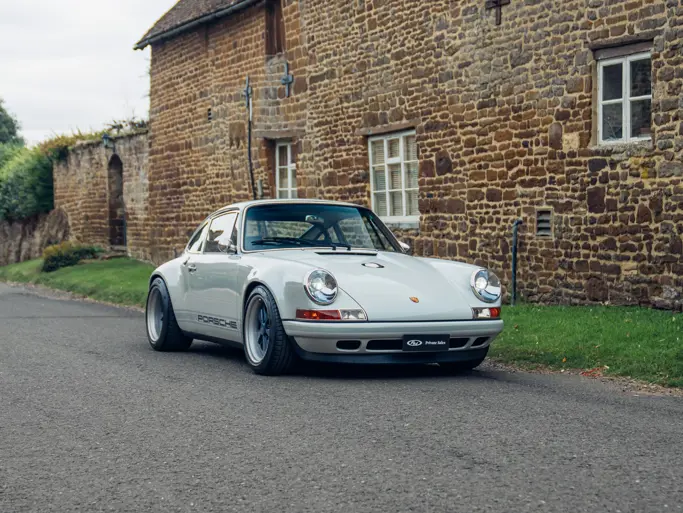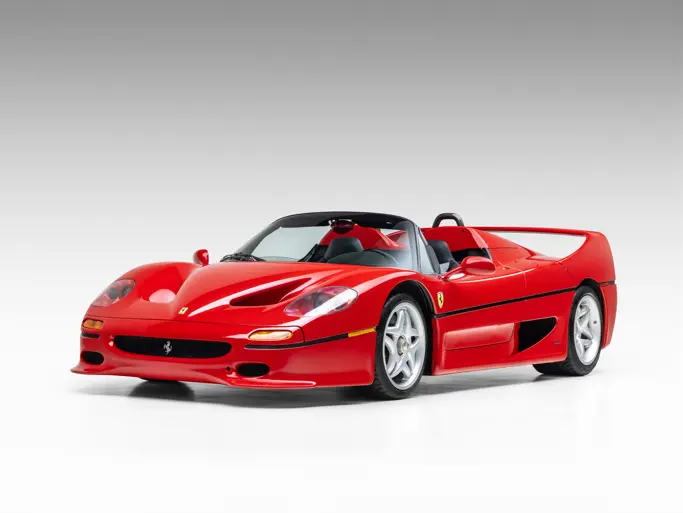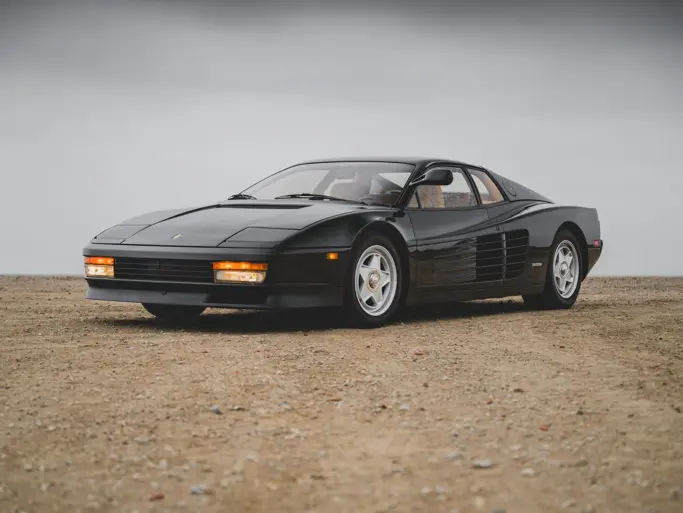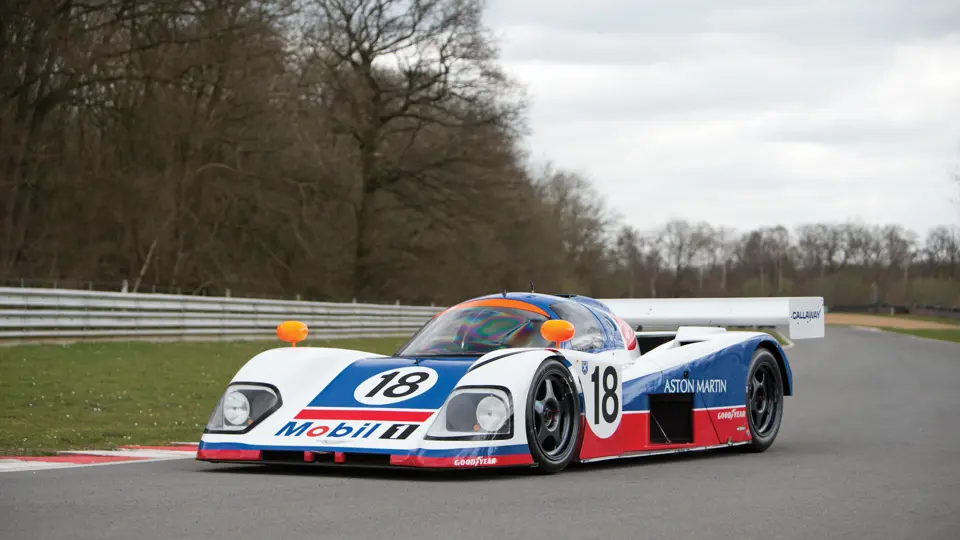
1989 Aston Martin AMR1 Group C Sports Prototype
{{lr.item.text}}
€700,000 - €1,000,000 EUR | Not Sold
{{bidding.lot.reserveStatusFormatted}}
- One of only four AMR1s in existence; one of two Lightweights
- Likely the most correct example; retains its original carbon-fibre chassis
- Driven by David Leslie, Brian Redman, and Michael Roe at Spa, Donington, Nürburgring, and Brand’s Hatch
- Competitive in modern historic racing
- Fastest lap by two seconds at the 2013 Monterey Group C race, at the hands of Brian Redman
- Bought directly from Protech/Aston Martin Racing by the present owner
- Une des quatre AMR1 existence; une des deux Lightweight
- Probablement l'exemplaire le plus authentique; encore équipé de sa structure d'origine en carbone
- Voiture pilotée par David Leslie, Brian Redman et Michael Roe à Spa, Donington, au Nürburgring et à Brands Hatch
- Compétitive en épreuves historiques actuelles
- Meilleur tour avec deux secondes d'avance à la course Groupe C de Monterey 2013, entre les mains de Brian Redman
- Achetée directement auprès de Protech/Aston Martin Racing par l'actuel propriétaire
723 bhp at 7,200 rpm, 563 lb-ft torque, 5,998 cc all-alloy Aston Martin V-8 engine with Callaway four-valve cylinder heads, Hewland five-speed manual transaxle with changeable final-drive ratios, carbon-fibre and Kevlar chassis tub, F1-type front and rear suspension, and four-wheel disc brakes. Weight: 920–960 kg Wheelbase: 2,900 mm
Moteur V-8 Aston Martin en alliage léger, 5 998 cm3, 723 ch à 7 200 tr/mn, couple 77,8 mkg, culasse Callaway à quatre soupapes par cylindre, boîte Hewland manuelle cinq rapports transaxle avec rapports de pont interchangeables, structure en Kevlar et en fibre de carbone, suspension avant et arrière type F1, freins à disque sur les quatre roues. Poids : 920-960 kg. Empattement: 2 900 mm.
In mid-1987, Aston Martin was already planning its next Group C racer, the AMR1. By 1988, the car was funded by automotive magnate Peter Livanos and would be designed by Canadian Max Boxstrom, of Dymag Wheels, whilst Ecurie Ecosse would back it, under the direction of Hugh McCaig, Ray Mallock, and Richard Williams. A stock Aston Martin V-8 block of 700 horsepower would be developed to power the sports prototype, but its two valve heads were replaced by four-valve versions that were designed by Reeves Callaway, of Old Lyme, Connecticut. Newport Pagnell was set to return to the glory days of the late 1950s when Team Manager John Wyer led Aston to victory at Le Mans. Chairman Victor Gauntlett said it outright: he would far rather win Le Mans and lose the championship than vice versa. A very high goal indeed!
The AMR1 was all new from the ground up. It had to be on the cutting-edge to battle the might of fully developed racers from Jaguar, Porsche, and Mercedes-Benz. To this effect, Boxstrom set about designing a car that would take maximum advantage of current ground-effects technology. The car had a massive aero tunnel running from midship to the rear. The engine was even angled three degrees upwards at the rear to improve the tunnel effect, whilst a large rear wing provided adjustable downforce. The chassis tub was built of Kevlar and carbon fibre, and the radiator was mounted in the rear. The tub was very modern for its day, as it was essentially a narrow driver’s compartment beneath the outer skin, which allowed for forward ground effect channels at the nose. Boxstrom’s suspension followed the Formula One practice of having almost no travel. The massive downforce that was created by the design was to, quite literally, press the car to the surface of the track.
Callaway Engineering in America worked with a range of 5.0- and 6.0-litre engines, but the smaller engine was eventually dropped by Aston in favour of the 6.0-litre Le Mans configuration. This engine developed a highly reliable 700 horsepower at more than 7,000 rpm, and the narrowed transmission, fitted between the engine and final drive, was unique to the Aston as well. A 100-litre fuel cell was fitted with a reserve of 6.5 litres, providing an extended range. The car’s final dimensions were 188 inches long, 78 inches wide, and 40 inches high, with a wheelbase of 114 inches. After chassis 01 and 03 had been intensively developed and tested, and even participated in some races, such as Dijon and Le Mans, this car, chassis AMR1/04, which is designated as a Lightweight as it is just 920 kilograms, was built-up in mid-1989.
In July, Brian Redman and David Leslie drove this AMR1 at the Brands Hatch 480 KM to an outstanding 4th overall finish. August saw this car at Nürburgring, where it snatched an 8th overall at the last corner and was again driven by Leslie and Redman. At the Donington 480 KM, it finished 6th overall; whilst at the Spa Group C race, chassis 04 was running in 8th place when a connecting rod let go on lap 44, resulting in its first DNF. After eight results in ten starts, the AMR1 team ranked 6th overall in the 1989 World Championship. As one of only four AMR1s in existence, chassis AMR1/04 is likely the most original example remaining, and it has garnered the most impressive racing results.
Although serious development of the new AMR2 took place over the winter of 1989 and 1990, various setbacks began to undermine the program’s continuity. A huge rift between the organisers, the A.C.O. of the 24 Hours of Le Mans race and the F.I.S.A. sanctioning body, created doubt concerning the continuation of the event. Ford had initially offered to develop and supply a much-needed new engine for the AMR1/2 program, but then they reversed their decision. After such a promising beginning, the AMR1 and AMR2 operation unfortunately ended in March 1990.
The present owner, an ex-chairman of the AMOC/USA East, best known for his on-track exploits in Aston Martin DB4 GT 17TVX (over 100 podiums in 20 years), purchased AMR1/04 directly from the factory 13 years ago, making him the first private owner. Since the early 2000s, he has raced this car, with mechanical support from Group C specialists Hudson Historics, in numerous sprints and endurance events and at circuits such as Watkins Glen, Lime Rock, Road Atlanta, Monterey, Sebring, and Daytona. In 2003, after an invitation from Lord March, AMR1/04 participated in the Goodwood Festival of Speed; this was an occasion that was pictured in many AMOC and international publications. Recently, after a thorough freshening, original driver Brian Redman set the fastest race lap, by two seconds, in the 2013 Monterey Historics Group C competition.
The current January/February issue of Vintage Motorsport features AMR1/04 on its cover and in a Salon feature, under the apt title of “Beastly Beauty”. This spectacular AMR1 is still “on the button” and suitable for further historic racing events and concours displays by its next favoured caretaker. Setups (suspension and engine) and memorabilia relating to racing in period and during its historic racing and concours are included with this Aston Martin.
It should also be noted that an extensive spares package exists for this car and is available to the winning bidder from the consignor by private treaty.
Au milieu de l'année 1987, Aston Martin planifiait déjà sa prochaine voiture du Groupe C, l'AMR1. En 1988, la réalisation de la voiture était financée par le magnat de l'automobile Peter Livanos avec une conception signée du Canadien Max Boxstrom, de Dymag Wheels, l'assistance étant assurée par l'Ecurie Ecosse, sous la direction de Hugh McCaig, Ray Mallock, et Richard Williams. Un moteur V-8 Aston Martin de 700 ch était mis au point pour équiper le sport-prototype, mais sa culasse à deux soupapes par cylindre laissait place à une version quatre soupapes conçue par Reeves Callaway, d'Old Lyme, Connecticut. Ainsi, le constructeur de Newport Pagnell était prêt à renouer avec le succès des années 1950, quand John Wyer, patron de l'écurie, avait amené Aston Martin à la victoire aux 24 Heures du Mans. Le président Victor Gauntlett l'annonça sans détour : il préférait remporter le Mans et perdre le championnat, plutôt que l'inverse. Excellent objectif !
L'AMR1 était une voiture complètement nouvelle. Elle se devait d'être à la pointe de la technique pour se mesurer aux machines parfaitement au point de Jaguar, Porsche et Mercedes. A cet effet, Boxstrom avait conçu une voiture exploitant au maximum les avantages de l'effet de sol. Ainsi, elle comportait un tunnel aérodynamique de grande taille courant du milieu à l'arrière. Le moteur était incliné de 3° vers le haut à l'arrière pour améliorer l'effet du tunnel, alors qu'un large aileron arrière procurait un appui aérodynamique. La structure du châssis était constituée de Kevlar et de fibre de carbone, et le radiateur était installé à l'arrière. Particulièrement moderne pour son époque, la structure était constituée surtout d'un étroit compartiment pour le pilote, sous le panneau extérieur, ce qui permettait de ménager des tunnels aérodynamiques à l'avant également. La suspension de Boxstrom suivait la technique de la Formule 1 et adoptait un débattement quasiment nul. L'effet de sol très important provoqué par cette conception permettait à la voiture d'être littéralement collée au sol.
Callaway Engineering, aux États-Unis, avait travaillé sur une gamme de moteurs 5 et 6 litres, mais le plus petit des deux était finalement abandonné par Aston, au profit de la configuration Le Mans 6 litres. Ce moteur fiable développait 700 ch à plus de 7 000 tr/mn et la transmission étroite, placée entre le moteur et le pont, était spécifique à Aston Martin. Le réservoir de 100 litres comportait une réserve de 6,5 litres, ce qui permettait une grande autonomie. Une fois terminée, la voiture mesurait 4,77 m de long, 1,98 m de large et 1,01 m de haut, pour un empattement de 2,90 m. Dans un premier temps, les châssis 01 et 03 ont été abondamment testés et mis au point, participant même à quelques courses à Dijon et au Mans. Ensuite, le châssis AMR1/04, désigné comme Lightweight car la voiture ne pesait que 920 kg, voyait le jour au milieu de l'année 1989.
Au mois de juillet, Brian Redman et David Leslie ont pris le volant de cette AMR1 aux 480 Km de Brands Hatch, décrochant une excellente quatrième place. Le mois suivant, toujours entre les mains de Redman et Leslie, cette voiture terminait huitième au Nürburgring après un dépassement dans le dernier virage. Aux 480 Km de Donington, elle obtenait la sixième place ; et à Spa, alors qu'elle occupait la huitième place dans la course des Groupe C, cette voiture châssis 04 connaissait un bris de bielle au 44e tour, ce qui la contraignait à l'abandon. Après avoir franchi la ligne d'arrivée huit fois sur dix départs, l'équipe AMR se classait sixième au Championnat du Monde 1989.
Faisant partie des quatre AMR1 en existence, le châssis AMR1/04 est l'exemplaire le plus original et celui qui a récolté les résultats les plus brillants.
Bien que le développement de la nouvelle AMR2 ait commencé sérieusement au cours de l'hiver 1989/1990, certains problèmes sont apparus, faisant peser sur le programme de sérieuses menaces. Ainsi, un profond désaccord entre les organisateurs, l'ACO des 24 Heures du Mans et la FISA, semait le doute sur la poursuite du championnat. Par ailleurs, Ford avait initialement proposé de développer et de fournir l'indispensable nouveau moteur pour le programme AMR1/2, avant de revenir sur cette décision. Par conséquent, après un début prometteur, le programme AMR1 et AMR2 était malheureusement abandonné en mars 1990.
L'actuel propriétaire, ancien président de l'Aston Martin Owners Club (AMOC) de l'est des États-Unis, connu pour ses exploits au volant de l'Aston Martin DB4 GT immatriculée 17 TVX (plus de 100 podiums en 20 ans), a acheté AMR1/04 directement auprès de l'usine, il y a 13 ans, ce qui en a fait le premier propriétaire privé. Depuis le début des années 2000, il a couru au volant de cette voiture avec l'assistance de Hudson Historics, spécialiste du Groupe C, dans un grand nombre d'épreuves historiques sur des circuits comme Watkins Glen, Lime Rock, Road Atlanta, Monterey, Sebring et Daytona. En 2003, à la suite d'une invitation de Lord March, AMR1/04 participait au Festival of Speed de Goodwood ; à cette occasion, elle est apparue dans plusieurs publications internationales, et de l'AMOC. Récemment, après une très sérieuse révision, son pilote d'origine Brian Redman a signé le meilleur temps, avec un avance de 2 secondes sur le suivant, lors de la course des Groupe C, aux épreuves historiques de Monterey, en 2013.
L'actuel numéro de janvier/février du magazine Vintage Motorsport présente AMR1/04 en couverture et dans un sujet sur une exposition, sous le titre évocateur de « Beauté Sauvage ». Cette spectaculaire AMR1 est prête à prendre la piste, et son prochain propriétaire pourra l'utiliser dans d'autres épreuves historiques, ou lors d'expositions. Les réglages (suspension et moteur) et la documentation relatifs aux compétitions et concours auxquels elle a participé à l'époque et aujourd'hui accompagnent cette Aston Martin.
Il est à noter qu'il existe un important lot de pièces pour cette voiture, et que le futur propriétaire pourra en faire directement l'acquisition auprès du vendeur.





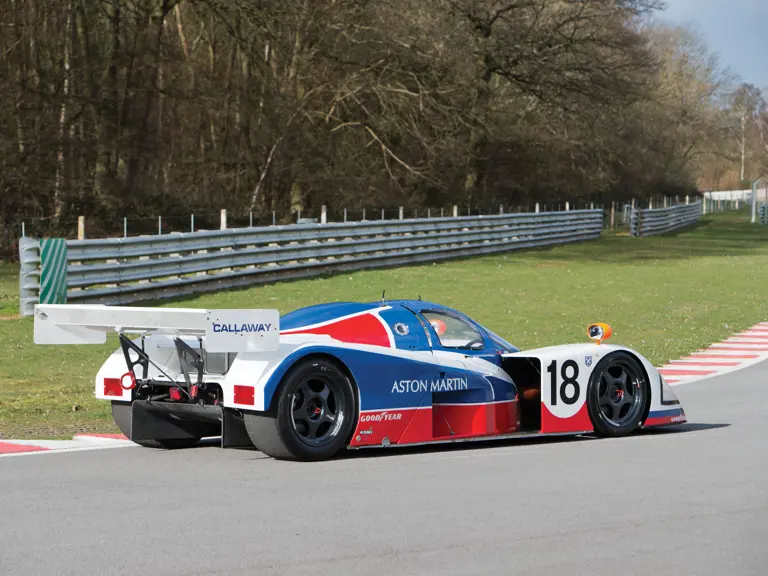

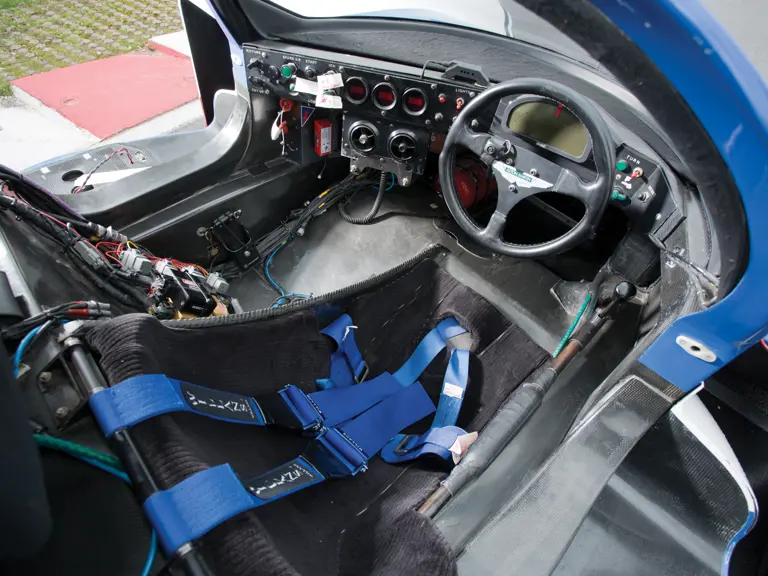
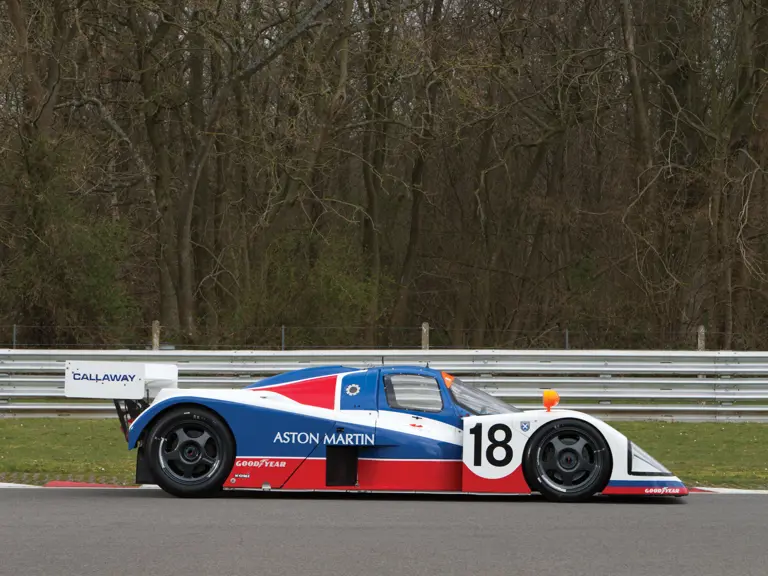
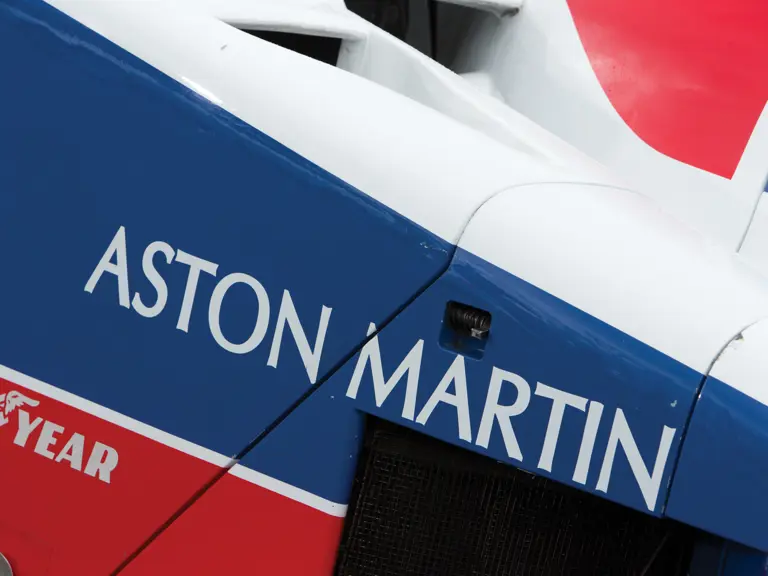
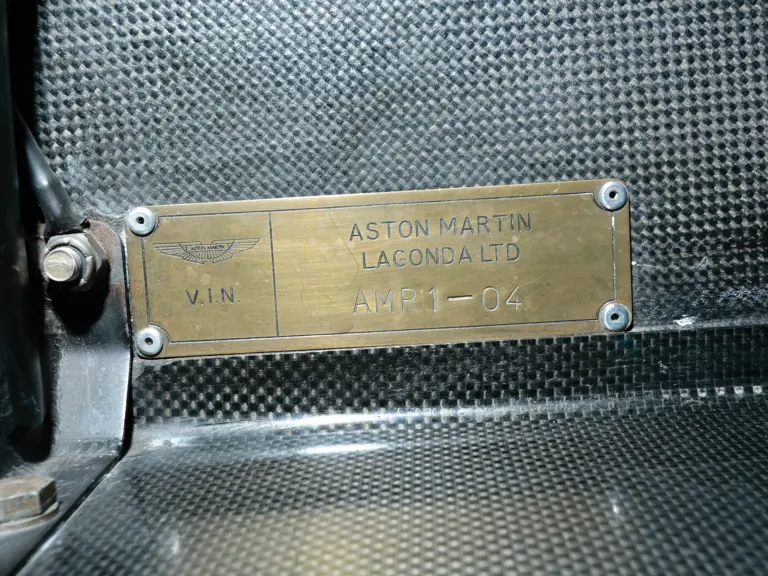
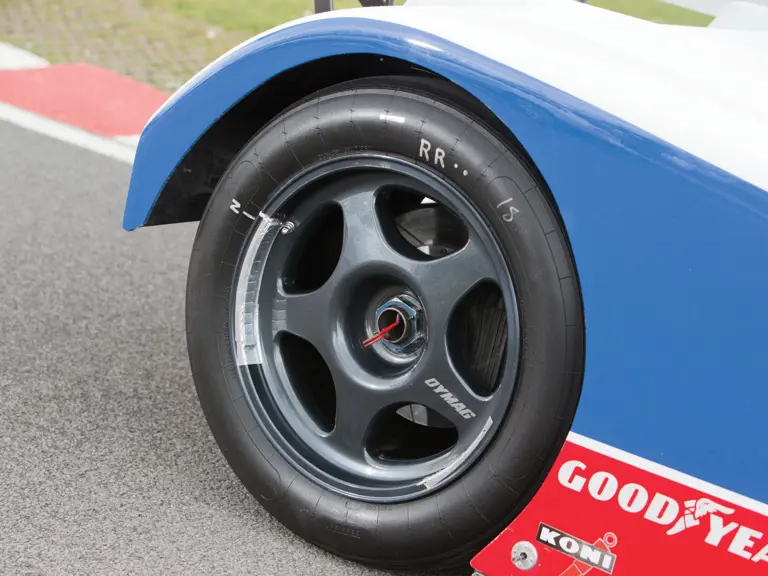

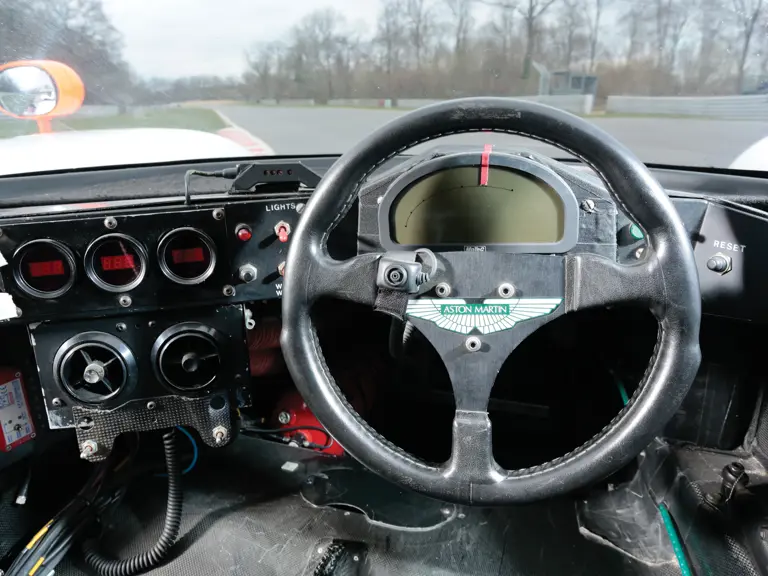
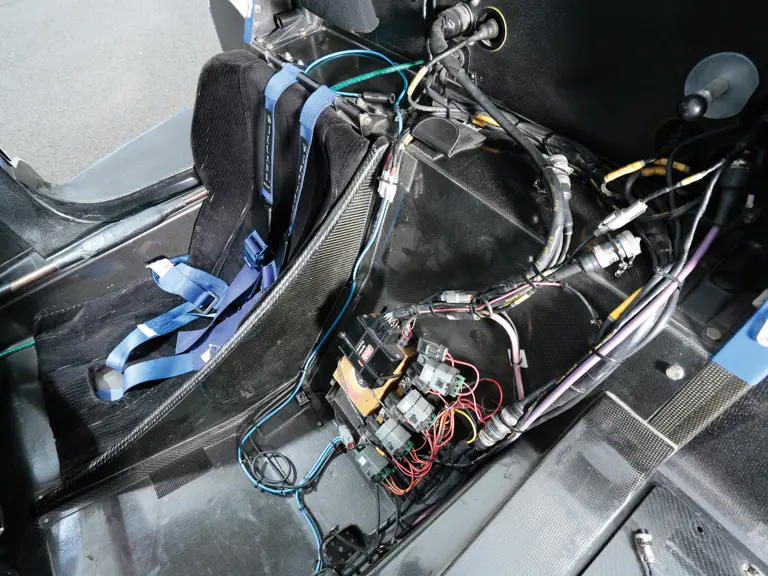
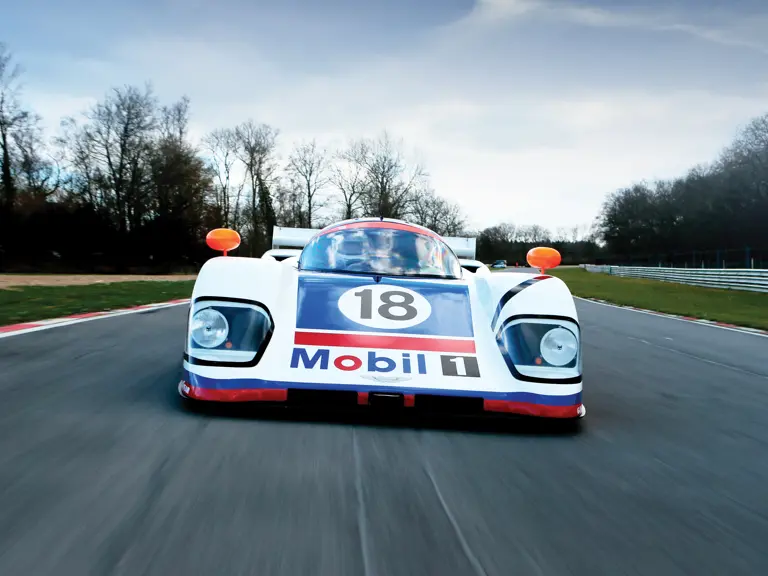
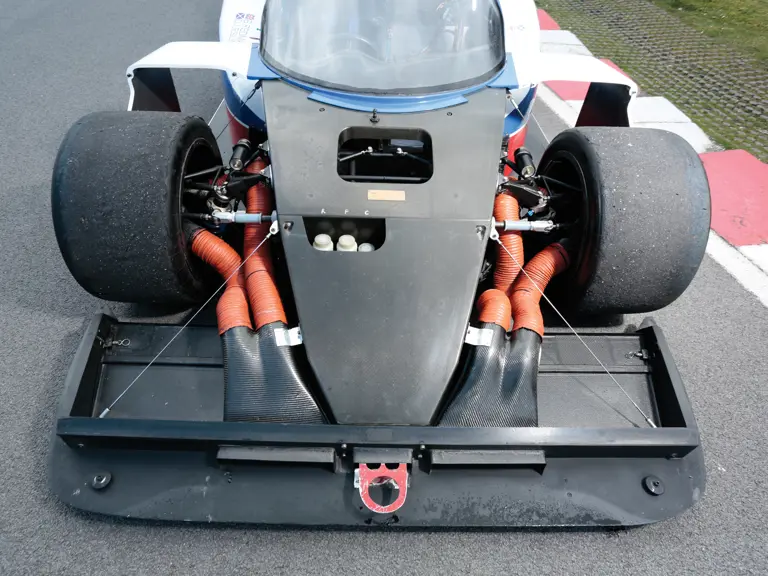
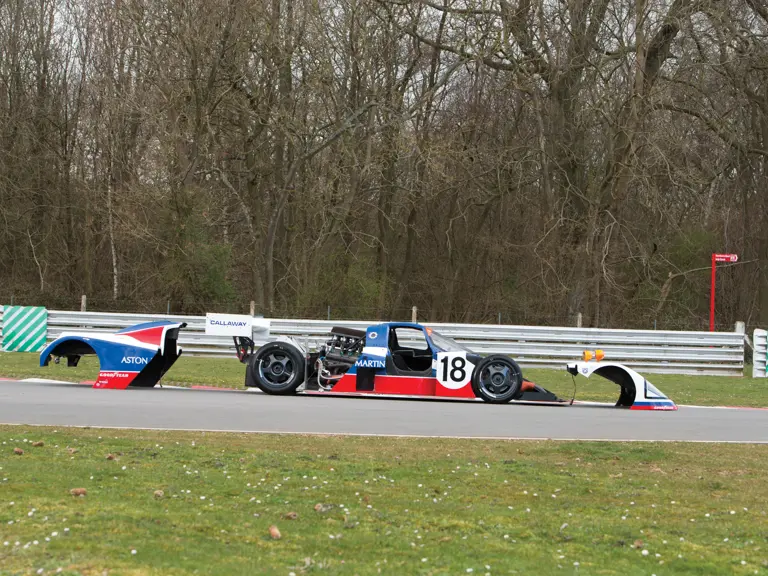
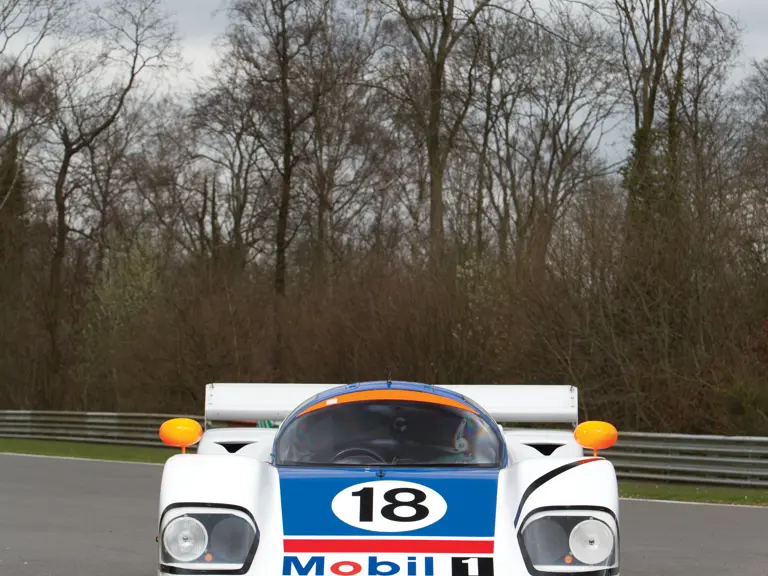

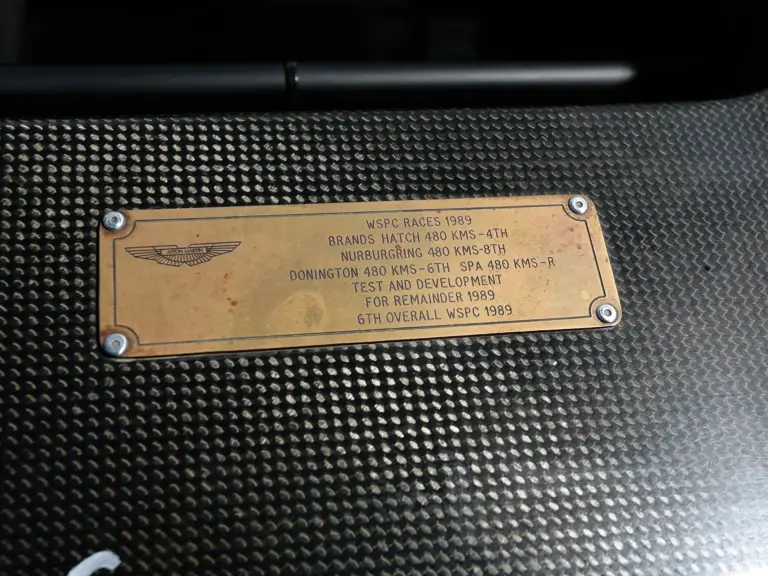

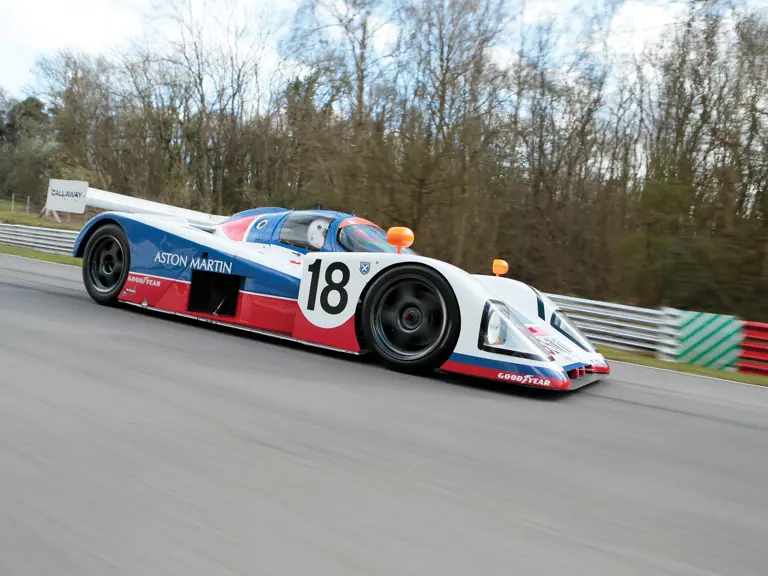
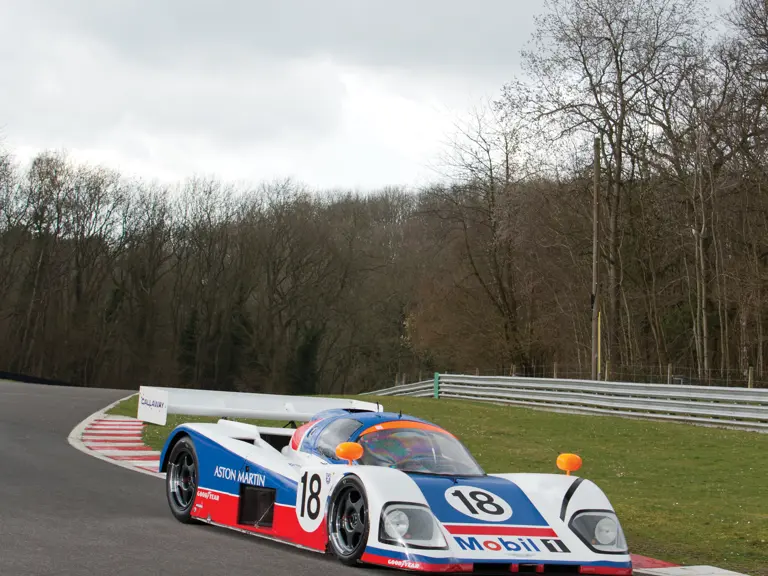
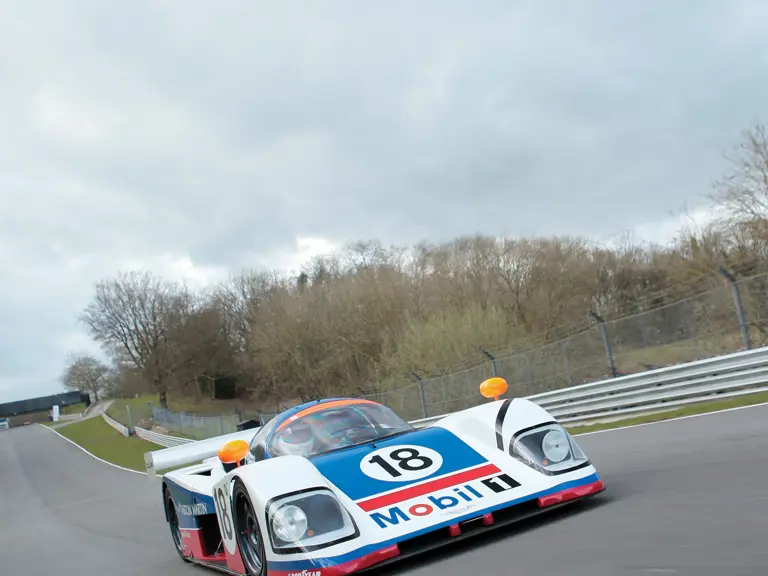

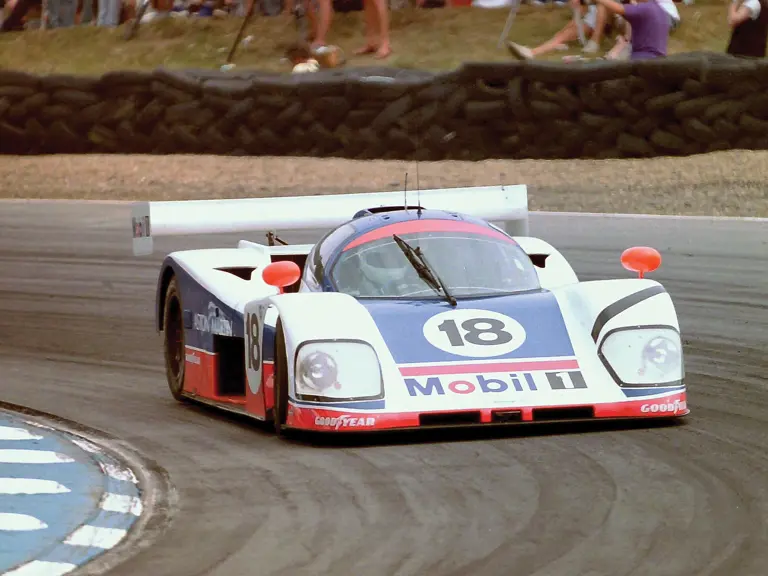
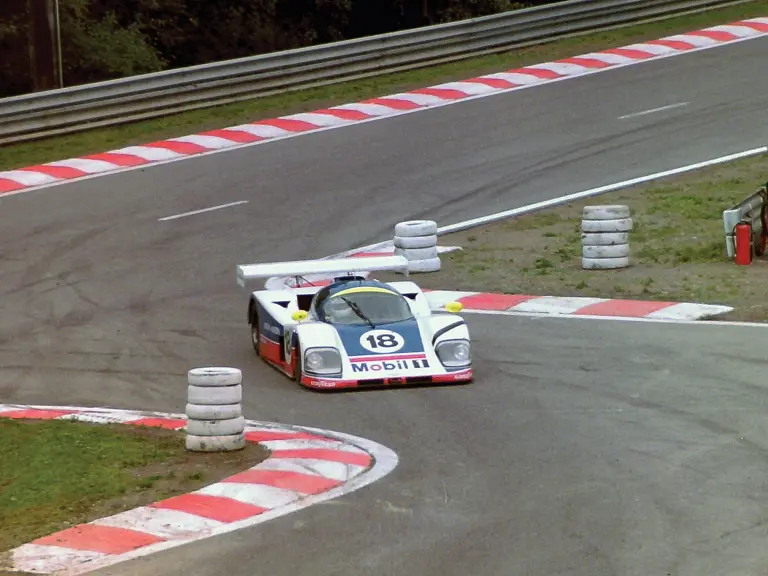
 | Monte Carlo, Monaco
| Monte Carlo, Monaco


